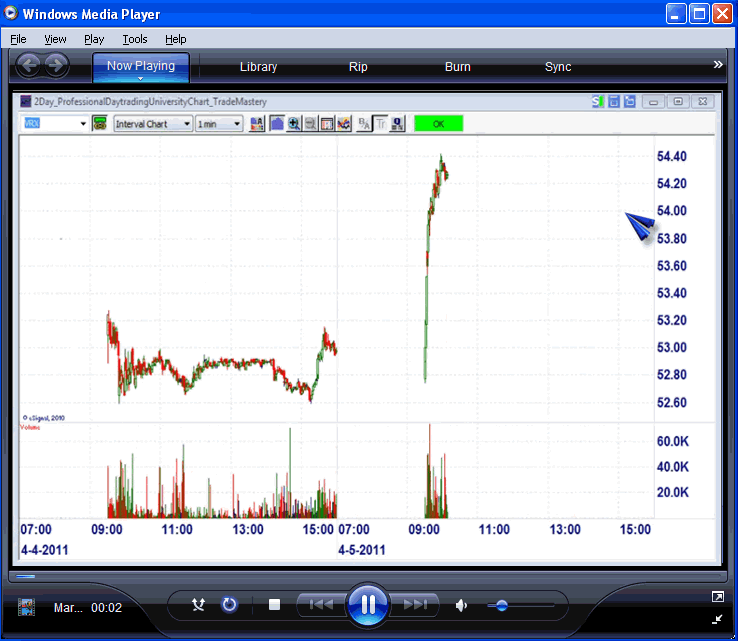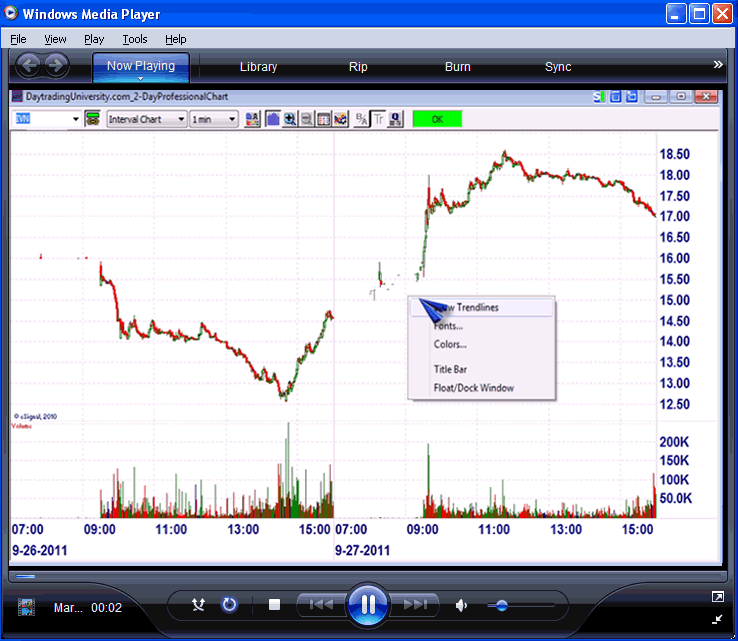Breakout Trading Technique article collections BASIC and ADVANCED
Post on: 16 Апрель, 2015 No Comment

Detailed Description
2014 ARTICLE COLLECTION SPECIAL. Ten of the biggest article collections in the Active Trader Store are now on sale for an additional 20% off through the end of the year. These ad-free PDF collections (already discounted 30% from the individual article rate) span the past decade of Active Trader. giving you in-depth coverage of specialized topics in a convenient digital format: Risk Control and Money Management Collection ; Breakout Trading Techniques Collection ; Trading Basics, Vol. 1 ; Stock Index Futures Trading Collection ; Trading Market Events Economic Reports and Holidays Collection ; Market Pulse Stock Market Patterns & Tendencies, Vol. 1 ; The Active Trader Interviews, Vol. 1. Vol. 2 and Vol. 3 ; and Trading System Lab Package #1: Catching the Trend .
This a combination set of the Advanced and Basic collections (22 articles total/69 pages).
The price shown is the discounted price.
BASIC ARTICLES
ARTICLE 1: Price Breakout by Active Trader Staff (March 2001)
Summary: A beginner’s guide to price breakouts.
Excerpt: The price breakout is one of the most fundamental concepts in trading. It occurs when price moves out of a consolidation or trading range (a period of relatively narrow, sideways price movement) or pushes above or below an established price level (support or resistance), initiating either temporary follow–through or a sustained trend.
ARTICLE 2: More bang for your buck: Patterns within patterns by Active Trader Staff (Oct. 2000)
Summary/Excerpt: One way to create trade opportunities with increased reward and decreased risk is to look for shorter–term patterns within larger patterns.
ARTICLE 3: Anticipating breakouts and beating slippage by Steve Wendlandt (Aug. 2000)
Summary: Make trading breakouts more profitable by getting in before the rest of the crowd.
Excerpt: One of the most important aspects of short–term trading is something you almost never hear about: slippage, which is the difference between where you expect, or want, to be filled on a trade and where your order is actually executed. However, a little–known tendency can help make slippage work for you instead of bleeding you dry. In fact, if most of your trading techniques are breakout related, you can use this trick on almost every trade you enter.
ARTICLE 4: 100–20 channel breakout system by Dion Kurczek (Trading System Lab, June 2003)
Summary: This classic trend–following system buys when price moves above the highest high of the last x days and sells when price falls below the lowest low of the last y days. (Tested on a stock portfolio.)
ARTICLE 5: Futures 100–20 channel breakout system by Dion Kurczek (Futures Trading System Lab, June 2003)
Summary: This classic trend–following system buys when price moves above the highest high of the last x days and sells when price falls below the lowest low of the last y days. (Tested on a futures portfolio.)
ARTICLE 6: 60–minute breakout system (futures) by Volker Knapp (Futures Trading System Lab, Jan. 2004)
Summary: This is an intraday system that trades on breakout of the range established in the first hour of trading.
ARTICLE 7: Four–percent breakout system by Volker Knapp (Trading System Lab, Sept. 2004)
Summary: In some situations, the market ignores the contrarians and continues to rise. Traders who fade the up move must cover their short positions, which leads to panic buying and further upward momentum. The four–percent breakout system is an attempt to quantify and profit from this market scenario.
ARTICLE 8: Broadening patterns: Clues to breakout direction by Thomas N. Bulkowski (April 2004)
Summary: A partial rise or decline can predict the direction of a breakout. Learn to use these signals to increase profits when trading broadening patterns.
Excerpt: Trying to determine when a breakout will occur in broadening chart patterns, which are expanding rather than contracting price formations, can be difficult. However, partial rises (PRs) or partial declines (PDs) can improve the odds of making a correct decision.
ARTICLE 9: High, tight flag helps squeeze out profits by Thomas N. Bulkowski (Dec. 2004)
Summary: This bullish formation boasts excellent post–breakout performance and a low failure rate––exactly the type of pattern traders should look for in bull markets.
Excerpt: A high, tight flag (HTF) is a consolidation pattern that forms after a stock’s price doubles. When price breaks out above the pattern, it signals the rise is not over. The basic HTF trade strategy is to buy at the close of the day after price breaks out above the pattern’s upper trendline. Although it is sometimes difficult to buy high and sell higher, the price moves following HTFs show how such an approach can work.
ARTICLE 10: Mastering two–minute breakouts by Ken Calhoun (Sept. 2001)
Summary: How can you find consistent trade opportunities? One way is to trade breakouts through yesterday’s high and low––but only after the stock has shown its true colors.
Excerpt: A relatively consistent short–term, pattern–based trade is to buy upside or downside breakouts of the previous day’s high or low, respectively, avoiding trades in the middle of the day’s range. This article shows you how to apply this technique using two–minute charts.
ARTICLE 11: Swing–trading 10–day channel breakouts, by Ken Calhoun (March 2002)
Summary: To trade breakouts successfully, you have to line up as many market factors as possible. Incorporating volume and momentum into your trading plan can put you on the inside track to breakout trades that won’t break apart.
Excerpt: Combining 10–day support and resistance lines with confirming signals such as volume breakouts and reversals is a practical approach to identifying swing trade opportunities. These 10–day channels provide clear criteria for entering breakout trades once these price levels are triggered.
ADVANCED ARTICLES
ARTICLE 1: Volatility breakout system by Thomas Stridsman (Trading System Lab, Oct. 2002)
Summary: Trading strategy is based on identifying situations when a market is about to burst out of a congestion area and potentially establish a long–term trend. (Tested on a stock portfolio.)
ARTICLE 2: Futures volatility breakout system by Thomas Stridsman (Futures Trading System Lab, Oct. 2002)
The system uses Bollinger Bands and a moving average to trade volatility breakouts. (Tested on a futures portfolio.)
ARTICLE 3: Better breakout trading: The Noise Channel system by Dennis Meyers (Sept. 2001)

Summary/excerpt: All breakout traders have to deal with the reality of false moves and whipsaws. The noise channel breakout system shows how a filter can improve the performance of intraday breakout trading.
The following discussion analyzes a variation on the simple channel breakout system that uses the latter type of filter to minimize whipsaws on an intraday basis. The strategy is tested on International Business Machines (IBM). The discussion is broken into two parts, covering 1) the system rules and data selection and 2) testing procedures. This will give you the necessary tools for performing similar research and tests on other markets.
ARTICLE 4: The long and short of it: Noise Channel Breakout System 2 by Dennis Meyers (Oct. 2001)
Summary: This follow–up article to the original Noise Channel Breakout System explores using different filters for long and short trades to see how they improve the performance of an intraday breakout strategy.
ARTICLE 5: The multibar range breakout system by Dennis Meyers (Jan. 2004)
Summary: Breakouts of price channels can be profitable––if the volatility is there and you’re on the right side of the trade. This stop–and–reverse system tries to capture intraday trends in the S&P E–Mini contract by recognizing differences in the characteristics of up moves and down moves.
ARTICLE 6: DeMark variation by Thomas Stridsman (Trading System Lab, Sept. 2001)
Summary: This system is based on a simple pattern, named TD Carrie, described by Tom DeMark in his book New Market Timing Techniques (John Wiley & Sons, 1997). (Tested on a stock portfolio.)
ARTICLE 7: Dynamic Breakout System by Thomas Stridsman (Trading System Lab, Feb. 2003)
Summary: This system enters a long (short) trade if the last closing price is above (below) the highest high (lowest low) of the lookback period. The lookback period changes based on market volatility. (Tested on a stock portfolio.)
ARTICLE 8: Futures dynamic breakout system by Thomas Stridsman (Futures Trading System Lab, Feb. 2003)
Summary: A version of the Dynamic Breakout System tested on a portfolio of futures markets.
ARTICLE 9: Experimenting with exits by Volker Knapp (Futures Trading System Lab, June 2004)
Summary: This system’s entry technique is simply a breakout above a 55–day high. The more important part of the strategy is a trailing stop technique that is designed to capture as much of the trend as possible by tightening the stop relative to the number of days the trade has been open.
ARTICLE 10: Monthly breakout by Dion Kurczek and Volker Knapp (Futures Trading System Lab, March 2004)
Summary: This system delves into the principle of walk–forward testing, where traders use in–sample and out–of–sample data for testing purposes.
[BASIC] ARTICLE 11: 60–minute breakout system (stocks) by Volker Knapp (Trading System Lab, Jan. 2004)
Summary: This intraday system takes a trade when the price breaks out of the trading range established in the first hour of the session.
You can download both collections as a single PDF file for $50.91!














